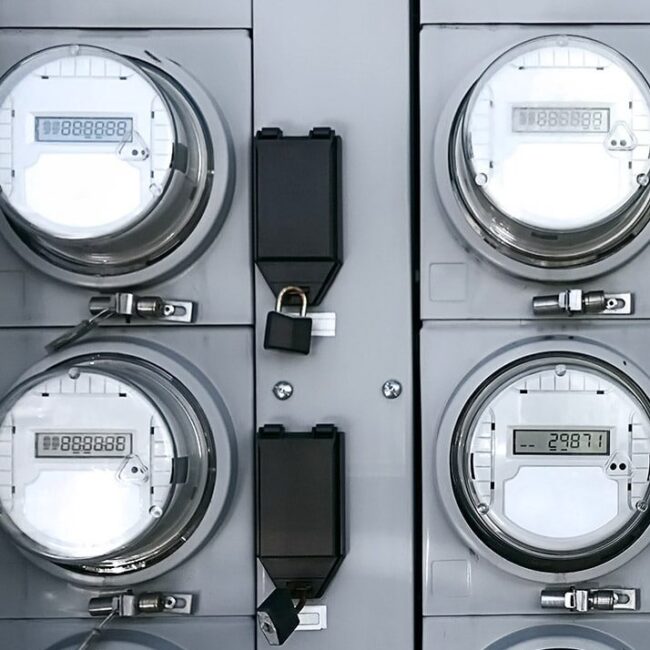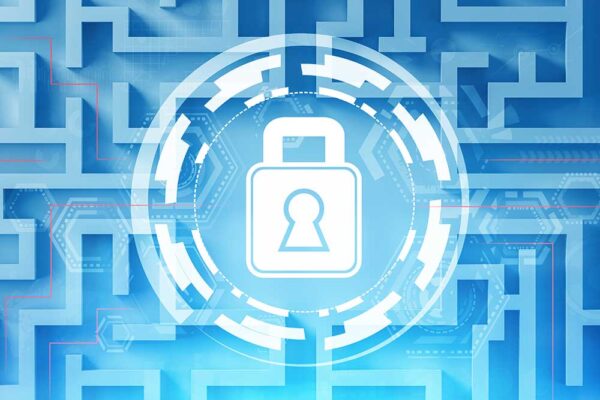As more homes become smart homes and cities become smart cities, Internet of Things (IoT) smart meters that support these initiatives are multiplying. The first wave of smart metering projects in the developed world is reaching completion. Many major utilities in these regions are preparing for a second. Driving this new smart meter deployment wave is a convergence of:
- New use cases
- Market pressures from clean energy and consumer privacy regulations
- Smart meter and cellular connectivity technologies
The same forces are propelling the first wave of smart meter projects in developing countries. As a result, the pace of change in smart meters is quickly increasing globally.
According to a 2021 report from Berg Insight, the installed base of smart electricity meters in North America will grow from 110.4 million in 2019 to 153.8 million in 2025. The installed base of smart electricity meters in the Asia-Pacific region is projected to grow from 659.3 million units in 2019 to 886.1 million units in 2025.
Utilities must discover how to choose the right blend of IoT modules and global connectivity solutions that offer local availability everywhere and future-proof their business. Today’s smart meter landscape poses new challenges for these utilities.
In this paper, we break down the current state of the market and offer smart ways to meet those challenges.
Table of Contents
New Challenges and New Choices for Smart Meters
As smart metering’s role evolves, standardizing wireless smart meter connectivity across multiple entities and platforms is a high priority. Utilities face different choices and more urgency than they did four years ago. Here are some of the challenges and options in the new market:
Climate Change Initiatives Are Accelerating Modernization Timelines
Smart meters are essential infrastructure components in smart energy initiatives worldwide. These initiatives include mandates to increase reliance on renewable energy sources, modernize the grid and meet net-zero goals.
New Use Cases Are Bringing Complexity and Opportunity to the Market
Smart homes, smart cities and industrial IoT are all clamoring for smart meters. Utilities must work fast to bring new smart meter capabilities to the market to meet these demands.
Connectivity Standards Are Evolving Rapidly
Broadband and narrowband cellular wireless connectivity technologies have made giant leaps in the past few years. In many developed countries, 2G and 3G are things of the past, and 4G is sharing the stage with 5G’s unmatched capabilities. In narrower band technologies, LTE Category (Cat) 1 bis, narrowband IoT (NB-IoT) and Cat M1 are thriving.
The Embedded Universal Integrated Circuit Card (eUICC) Is Coming into Its Own
eUICC’s ability to select, provision and switch mobile network operators (MNOs) over the air is becoming a game-changer for smart meters. As eUICC reaches full maturity and emerges in different markets, it will likely become the smart meter module SIM solution standard.
Smart Meters Are Going Global
Managing device connectivity across regions, borders and markets has always been challenging. The increased global smart meter demand is heightening that challenge. Wireless standards and frequency bands vary widely, and devices with traditional SIM cards will face severe limitations.
Increased Demands and New Technologies
The opportunities and challenges utilities face are:
- Increased global demand for smart metering
- The plethora of wireless standards and bands that devices must accommodate
- New technologies entering the market
Companies that embrace new technologies (e.g., embedded SIMs) will realize logistical advantages in operating across countries and increase product longevity. Taking advantage of embedded connectivity by choosing the right global IoT mobile virtual network operator (MVNO) is critical.
We’ll look at some of these choices in the following sections and provide tips for navigating this new landscape.
Choosing a Connectivity Standard for Smart Metering Solutions

Utilities looking to implement a smart metering solution have several options for connectivity standards. Low-power wide-area networks (LPWANs) have long been a popular and affordable choice. They provide low-power, long-lasting connectivity based on mobile technology. Coverage is still an issue in some areas, but this is changing with the adoption of several global LPWAN options, including:
NB-IoT
NB-IoT is a growing connectivity option offered by several major cellular providers in some world regions. Devices using NB-IoT can have battery lives of up to 10 years. This long battery life is possible if the device is well-designed and operates under a network that supports the standard’s deep power-saving features.
NB-IoT devices can transmit data at peak rates of 250 kilobits per second (Kbps). This speed makes it ideal for utility applications. NB-IoT operates on licensed frequency bands, while other LPWANs use the unlicensed industrial, scientific and medical (ISM) spectrum. Because it’s licensed, NB-IoT can ensure service-level agreements (SLAs) between cellular providers and their customers.
LTE Cat M1
Although it carries the Long-Term Evolution (LTE) label, LTE Cat M1 is an LPWAN that enables medium data rates — about 375 kilobits per second. It also offers a better range than other LTE standards, especially indoors.
Like other LPWAN options, LTE Cat M1 allows for lower power consumption, extending battery life. The popularity of LTE Cat M1 is growing within the U.S. due to its similarity to other LTE networks. It offers similar latency and bandwidth to the higher LTE categories while saving on power and providing better coverage.
In addition to LTE Cat M1 and NB-IoT, new broadband cellular standards have entered the market and are expanding choices for smart metering initiatives:
4G and 5G
High-bandwidth standards such as 4G and 5G are emerging as popular choices for smart metering. According to GSMA Intelligence, the widely popular 5G standard will likely have two billion subscribers by 2025. 5G is well suited to the utility industry because it can support the industry’s stringent service requirements, including:
- Constant uplink traffic-bearing capacity
- Latency
- Packet loss rate
- Synchronous timing
- Channel availability
NB-IoT and LTE-M are integral standards of 5G. By selecting cellular 4G or 5G over unlicensed spectrum options, utilities can future-proof their solutions, delaying the need to restructure.
RedCap
3GPP Release (Rel) 17 introduced support for reduced capability (RedCap) devices. This light standard of the 5G family will run on 5G New Radio (NR) and will fulfill the needs of devices using LTE Cat 1-4, such as:
- Wearables
- Industrial wireless sensors
- Video surveillance
- Telematics
- Health Care
RedCap is expected to continue to meet these needs for the foreseeable future. The standard is ideal for applications that do not require ultralow latency but need reasonable throughput to ensure data flows for next-generation applications.
Selecting a Connectivity Module
In addition to choosing a connectivity standard, utilities must determine the best connectivity module for their solution. These wireless modules are an essential component of any smart metering initiative. There are countless choices on the market and many variables to consider:
- Security. The proliferation of embedded SIM modules with eUICCs greatly expands the attack surface. Developers must ensure their devices are fully protected against cyberthreats, such as cyberattacks and cloning.
- Size and form factor. Smart meters are taking on various forms and uses that were unimaginable a few years ago. Utilities must choose a module (or module family) with a form factor that can be used across their markets and work with those markets’ connectivity technologies now and in the future.
- Power usage. Utilities must choose a module that can meet their needs while using minimal power. This includes power utilities in which the module is drawing power directly from the mains. Modules with low power usage for water and gas will lengthen the device’s battery life and decrease the frequency of required maintenance.
- Longevity. Given the shifting landscape, future-proofing will be essential for smart meter initiatives. Utilities should invest in a module with a life cycle that matches their meters. They should select a provider that will:
- Be in the market when replacements are needed
- Maintain the supply continuity of the form factor integrated into the meters
What Does Future-Proofing IoT Smart Meters Look Like Today?
Choosing the right solutions is crucial for the future of your business. Smart meter technologies that will endure will enable you to:
- Get up to speed fast. The net-zero age’s accelerated modernization timelines require solutions fit for your use cases while being quick to deploy wherever and whenever you need them.
- Adapt to new technologies as they emerge. Look for solutions with the agility to adapt over the next decade, protecting your market share and investment.
- Embrace a longevity mindset. Smart meters are here to stay. Devices that work from day one — and continue to work over the next 10-15 years — will dominate in the years to come. Choose a solution provider with expertise and proven experience in the long run.
- Go global. Build your smart meter initiatives while keeping in mind that the future of smart meters is global. Eliminate cross-border and multiregional compatibility issues by using embedded SIM (eSIM) solutions. eSIMs don’t have to be physically switched for use on different mobile networks.
- Reduce complexity. As more choices enter the market, consider a robust combined solution from one provider that offers bundled connectivity, modules and support.
Simplifying IoT Connectivity for Tomorrow’s Smart Meters

Meeting these rapidly changing challenges is a complex endeavor. Organizations that embrace a combined solution, from hardware to connectivity and management platforms, will have an early advantage against competitors.
The NExT™ network is a cloud-native, mobile core IoT network. It offers one contract and one bill, with no need to work across multiple entities and MVNOs. With NExT, your connectivity plans will offer the most cost-efficient and best coverage solution, no matter where your device is.
NExT enables complete connectivity and device management so you can get up and running fast. The network delivers scalable global connectivity with coverage from more than 600 carriers in over 200 countries. With NExT, you can leverage:
- The NExT Embedded connectivity solution that reduces your module footprint
- OneEdge™ to accelerate your time to market
The unified solution simplifies all deployment types for IoT connectivity. It offers everything you need to move forward with future-proof smart meters. NExT empowers you with:
- One global SIM for the entire IoT device life cycle with NExT or NExTPlus™
- IoT and mobile broadband plans for multiple technologies (i.e., 2G and 3G in legacy markets, 4G LTE, NB-IoT, LTE Cat M1 and 5G coming soon)
- The ability to switch between local MNO profiles and global roaming (multi-IMSI and eUICC)
- Connectivity and module bundle offerings such as the embedded connectivity module
- Global and regional plans to ease your deployment
- Custom data plans, roaming and regional
- 24/7 expert IoT support
- Enterprise-grade security
Embedded SIM Technology
Our eUICC and integrated UICC (iUICC) SIM technologies eliminate the need for conventional SIM cards and trays. As a secure application that’s part of the module, embedded SIM connectivity stores and manages many MNO profiles within the module’s hardware. This security allows utilities to minimize exposure to coverage outages across millions of devices.
Connectivity issues on edge devices like smart meters can be addressed quickly with location information and remote network parameterization tools. For meters or devices that must include a physical SIM, there is an option to switch between the physical and virtual SIM locally or remotely through the control portal. This feature empowers utilities to invoke the physical SIM baseline remotely when necessary for coverage issues or troubleshooting.
High-Speed IoT Solutions
Our IoT adapter modules leverage modern, high-speed LTE and 5G networks. We were at the forefront of Gigabit LTE and 5G with award-winning data cards. We understand the importance of supporting next-generation IoT applications with technology that can grow as networks embrace 5G. It’s essential for utilities’ solution providers to innovate and take advantage of the speed and availability of the standard.
Versatile Form Factors
A form factor family approach is available to support all cellular IoT technologies. Each module in a family has the same size and shape, pin-to-pin compatibility, and software interface. One design can address various geographic markets because the modules are interchangeable.
Long-Term Availability
Our IoT modules are designed with long-term availability in mind. They match end-product life cycles, reduce field support and lower the total cost of ownership. The module form factor or application programming interface (API) will be available if you need a replacement in later years.
Expert Support for IoT Smart Metering Solutions
We have over 22 years of experience in IoT hardware and a complete connectivity solution. We provide expert support and advice as you build your smart metering solution. The services our expert team provide include:
- Design review services
- Schematics reviews
- System architecture counseling
Market Data
- By 2025, global IoT connections will reach 27 billion. (IoT Analytics)
- The market for smart meters is projected to reach $30.2 billion by 2026, up from $19.6 billion in 2021. (Markets and Markets)
- Battery-operated water and gas smart meters will have an installed base of more than 640 million meters by the end of 2026. (ABI Research)
- In 2020, cellular smart meters accounted for the largest share of the smart meter market. (Markets and Markets)
Discover What We Can Do for Your IoT Smart Meter Solution
The NExTPlus single global SIM and the NExT network’s scalable connectivity empowers utilities’ smart meters with a decisive advantage. Explore our IoT enablement solutions and discover how we can help you achieve future-proof wireless connectivity. Speak to our experienced advisors to get started on your smart meter solution.
Key Takeaways
- Utility companies face a plethora of challenges, from climate change initiatives to increased demand for smart meters. Companies that adopt the latest technologies (e.g., eSIMs) will gain a competitive advantage.
- There are multiple global cellular LPWAN connectivity options for smart meters, including NB-IoT, LTE Cat M1 and even 5G RedCap.
- Choosing the right connectivity module is critical for smart metering solutions. Variables like security, power usage and longevity are essential considerations.
- Telit Cinterion can simplify IoT connectivity with its NExT IoT network, NExTPlus global SIM solution and extensive cellular module portfolio.


